Plastic garden plant pots are pretty popular because they are lightweight and inexpensive.
High-quality plastic garden plant pots are highly resilient and they are highly durable.
Most manufacturers of plastic garden plant pots use recycled plastics.
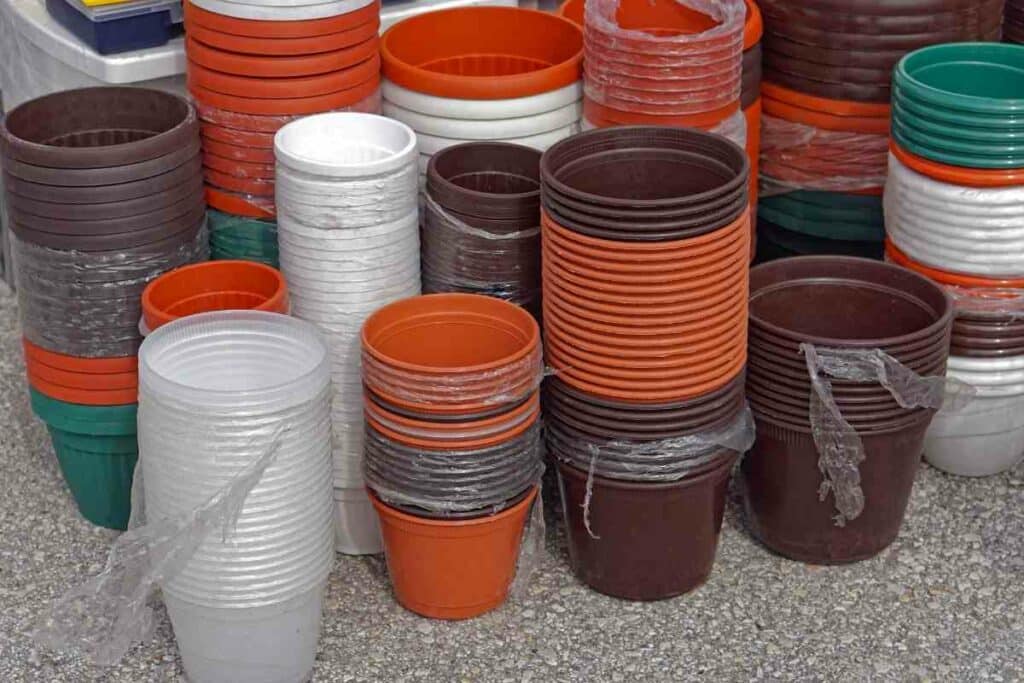
Therefore, they help in mitigating the environmental menace caused by plastics.
Recycling and using recycled plastic garden plant pots are two remarkable strategies to minimize the amount of plastic waste in landfills. Manufacturers utilize mechanical recycling, highly advanced technology to recycle thermoplastic materials.
The technology involves melting recycled plastics to design and mold new plastic garden plant pots.
It’s also a terrific aesthetic choice that allows the development of different designs and finishes for recycled plastic garden plant pots.
Are Plastic Garden Plant Pots Recyclable?
As an avid lover of the environment, I prefer to utilize environmentally-friendly facilities.
Because most flower lovers live in flats with no gardens, flower pots have become so common.
However, we live in an unfair world where the most desirable things have some effects that adversely affect the environment.
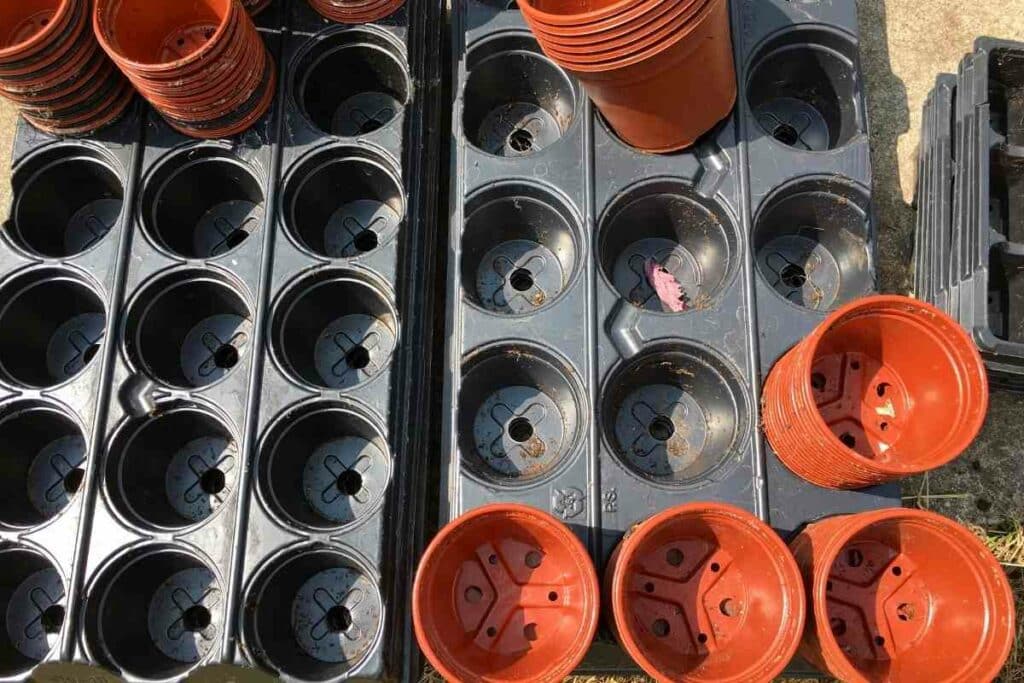
That noted, it is important to conform to modern economic demands, but it’s crucial to adopt recyclable items, including garden plant pots.
Although garden plants are manufactured using different products, plastic plant pots are recyclable.
Plastic is petroleum-based, thus non-biodegradable, but it can be:
- recycled
- re-molded
- or upcycled
Plastic plant pots are different, and the pots’ recyclability depends on the type of plastic pot.
There are four types of plastic plant pots:
- high-density polyethylene
- low-density polyethylene
- high-impact polystyrene
- and polypropylene
As stated, there are four types of plastic plant pots, and all of them are recyclable.
However, polypropylene plastic pots are rarely recycled, only 1 percent recycled.
This creates a tremendous environmental hazard since the rest heads to the landfill.
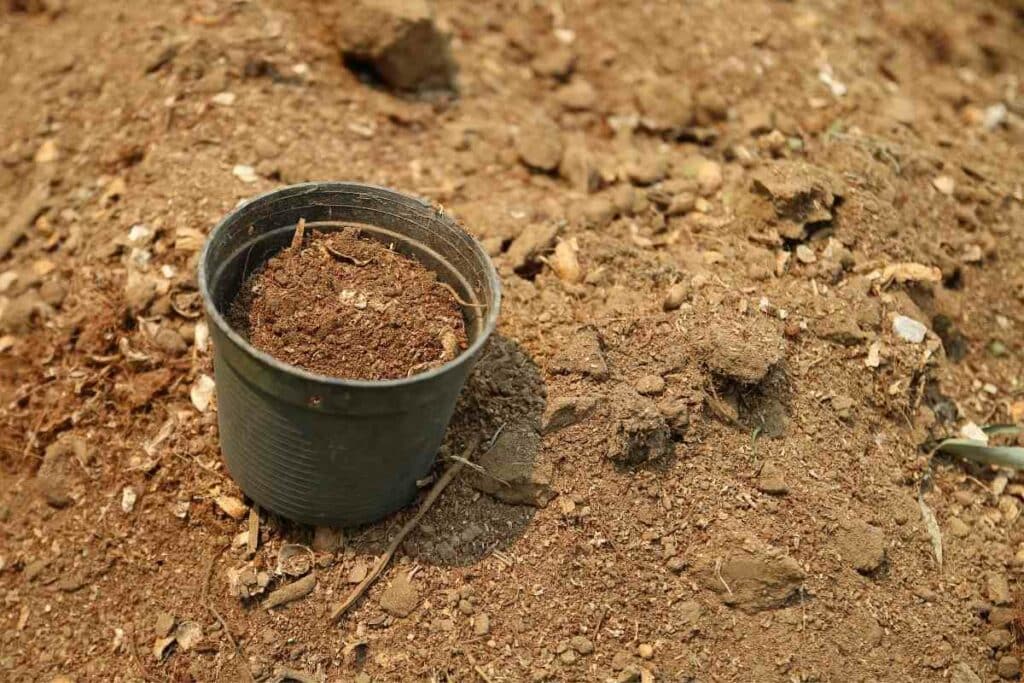
They are not recycled because recycling them is not economically viable, and most local governments lack structures for their pickup.
Are All Plastic Garden Plant Pots Recyclable?
It is possible to recycle the green, blue, or red plastic pots. However, it would be best to discard black plastic pots and trays. Black plastic garden plant pots are currently not collected for recycling since the gear used to sieve plastics in the recycling process cannot identify them.
Recycling black plastic is difficult because recycling facilities filter plastics by bouncing a laser beam off them.
Because black plastic absorbs light, it cannot be separated and disposed of in a landfill or cremation.
Optical sorting equipment does not identify black plastic; hence it cannot be sorted manually at the recycling plant.
The other concern is the sort of polymers used. Plant pots are often composed of a soft, flexible plastic called polypropylene or plastic.
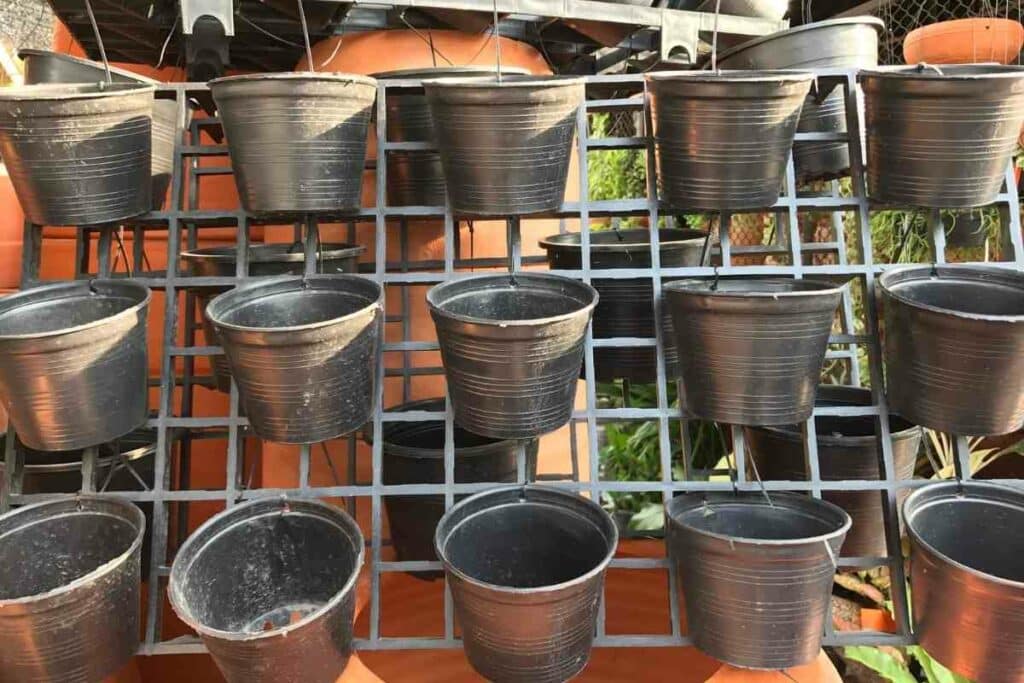
Others are constructed of High-density Polyethylene, which is more robust, hard, and has a better recycling rate.
Some of the lowest-value varieties of plastic are included in the mix of plastic resins used to create:
- garden plastic pots
- trays
- flats
- and cell packs
These resins are inexpensive to mold into sturdy containers to allow commercial factory transportation. Still, they are not ideal for re-manufacturing into a new generation of functional plastic pots.
The recycling facility cannot recycle dirty plastic garden plant pots. Even after you empty the garden pots, dirt remains in most of them.
Don’t Forget: Recycling industry service providers request that you place items in the recycle empty bins, washed, and dry. Soil residues will pollute this material stream, putting recycling systems at risk.
How to Recycle Plastic Garden Plant Pots
If your town or city does not allow you to recycle plastic garden plant pots in bins, taking the plastic pots to communal collection places such as designated recycling bins or facilities is another alternative.
Collecting Materials
Collecting post-consumer materials from households, companies, and institutions is the initial stage in the mechanical recycling process.
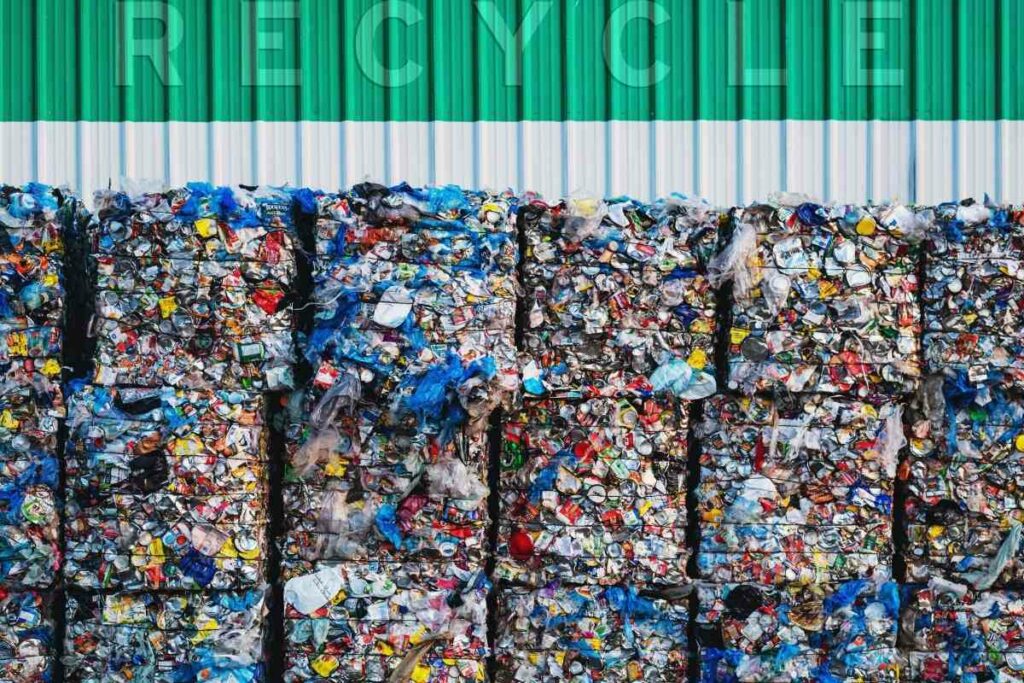
However, ensure that the plastic pots are thoroughly cleaned before placing them in the bin for recycling.
Recyclers must sort various distinct forms of plastic.
Classification
Furthermore, plastics may be classified based on additional characteristics such as:
- color
- thickness
- and application
This is performed by machines at the recycling facility and is critical in increasing plant efficiency and avoiding contamination of end products.
The plastic garden plant pots are then put through shredders, which shred them into much smaller bits.
These smaller bits can be processed for reuse in subsequent phases, unlike formed plastic pots.
Furthermore, the resized plastic fragments can be utilized for various purposes without further processing, such as:
- adding asphalt
- or being sold as a raw material
Breaking down the plastic into tiny pieces also detects any remaining contaminants like metal, which may not have been eliminated by washing but may be easily gathered with a magnet.
Air Classification
The plastic components are evaluated for class and quality.
First, they are separated based on density, determined by floating plastic particles in a water container.
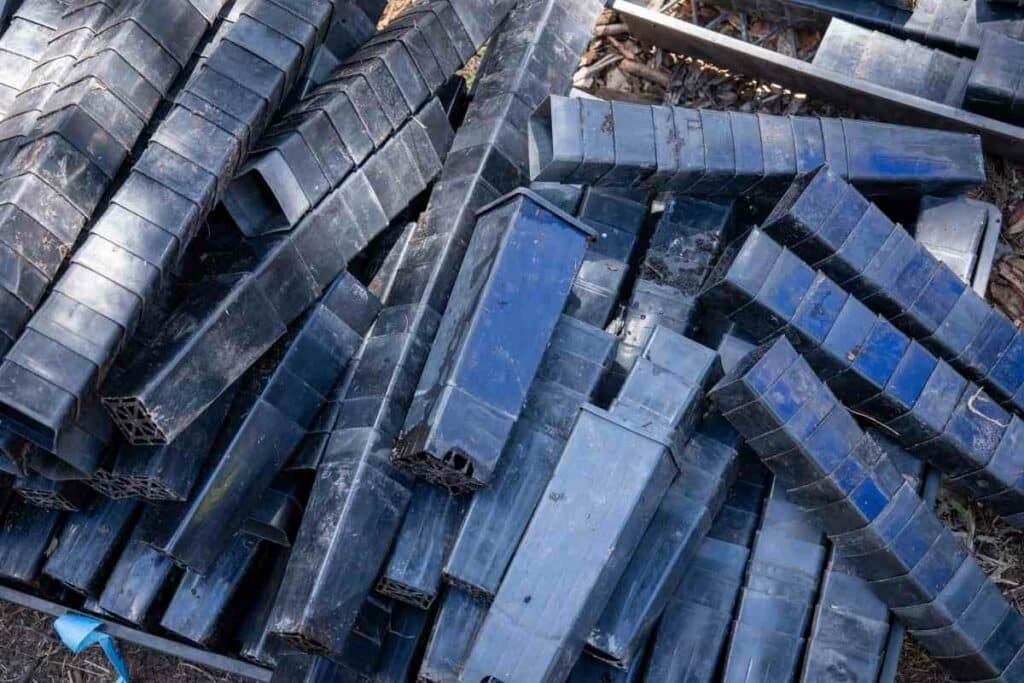
Another attribute is the air classification of plastic materials. The thickness of the plastic is determined by air classification.
Recyclers place plastic particles in a wind tunnel to determine the quality:
- Plastic thicker and larger will remain at the bottom of the wind tunnel.
- Those that are thinner will float.
This stage also determines the color and melting point of the plastic.
Recycling workers examine plastic samples to assess each substance’s melting point and color.
Following the identification procedure, the plastic particles are separated and sent for further processing, where the shredded plastic particles are turned into a useable product for manufacturers.
Final Step
The shredded plastic is melted and mashed together to make pellets.
It is impossible to compound all types, classifications, and plastic quality in a single facility.
Other Ways of Recycling Plastic Garden Pots
You may use a small plastic garden pot to produce excellent soil scoopers and sisters.
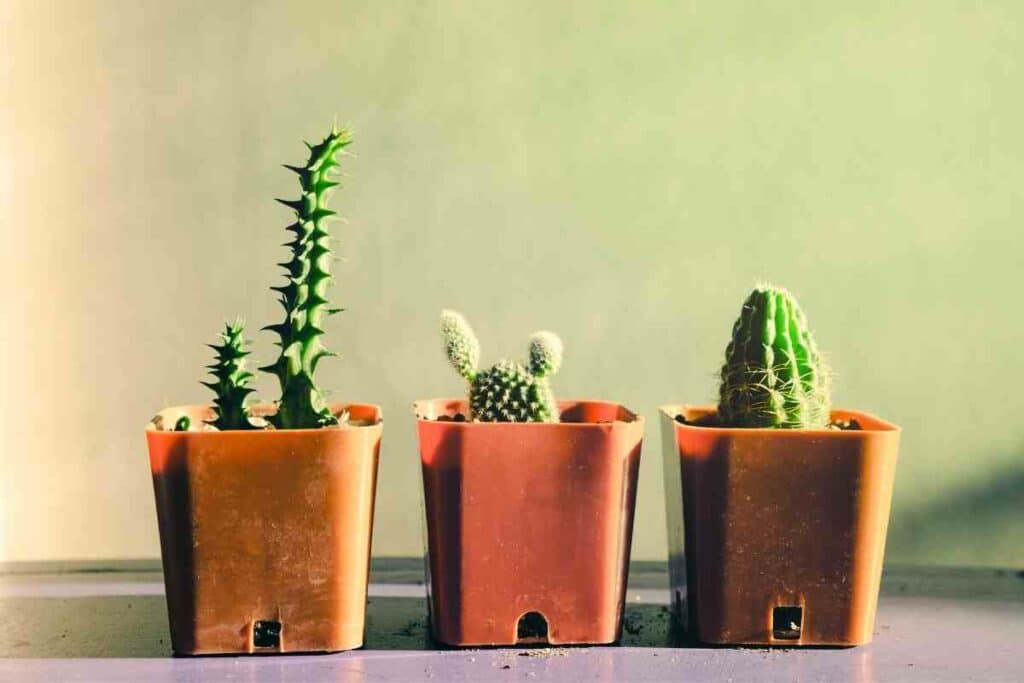
Here are some ideas:
- Make holes in the bottom of your plastic pot and use them to disseminate fertilizer around your plants.
- You can also use it to propagate seeds or cuttings.
- Cracked plastic pot pieces can also be used as plant markers in your garden.
- You can use plastic pots as permanent planters in the garden. Dig a hole, lay a huge plastic pot inside the spot, and then insert a fresh pot in the hole to make swapping out easy. This is especially useful if you desire to add seasonal plants to your yard.
- You can also use them for seed beginning and giving away plants that you have split.
- Use bigger plastic plant pots to protect your shrubs or herbs from frost during the chilly autumn and spring evenings.
- You may use your bigger plastic pots to shield your plants from frosts and offer adequate insulation for your plants.
If you have serious DIY abilities, you can make a plastic pot look great by covering it with plaster and burlap.
Alternatively, you may transform plastic garden plant pots into lovely painted lace decoupage decor.
Plastic garden plant pots may be used as storage containers. You may store goods in your plastic pots around the house.
You may even repaint them and use them as decorative items or art in your home.
A plastic garden plant pot will make an excellent liner to aid in the soil’s drainage.
Place a plastic pot inside a ceramic pot.
Over Time: You may remove the plastic pot to check for stagnant water and drain it regularly.
Benefits of Recycling Plastic Garden Plant Pots
Any passionate gardener will tell you that you need to move plants around to keep them healthy.
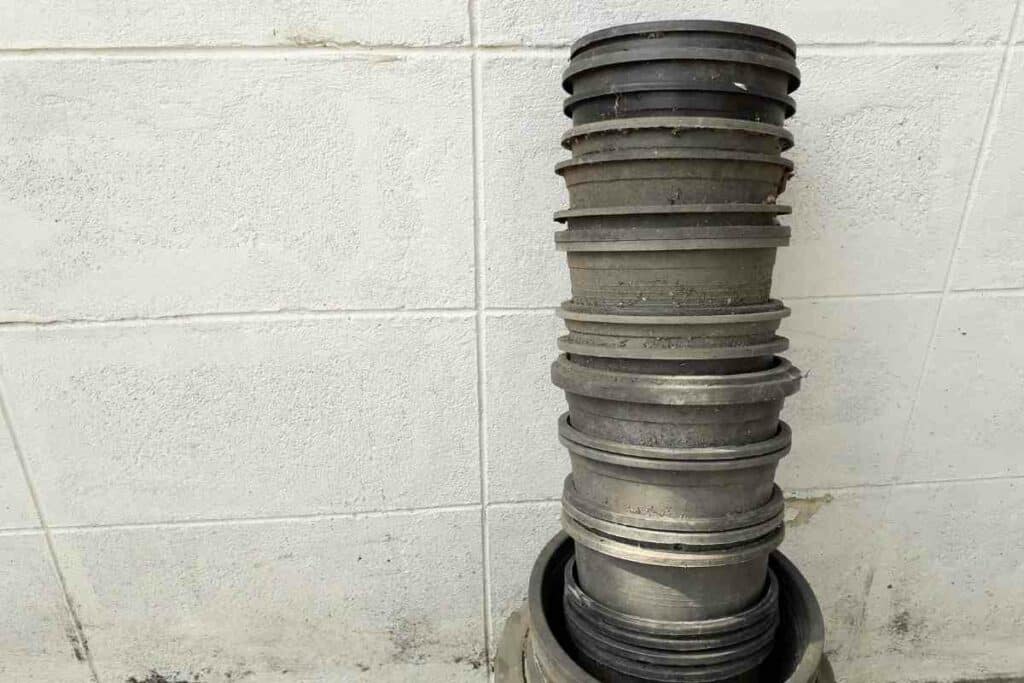
Harsh weather and prolonged sun exposure can wreak havoc on plants, and utilizing a lightweight recycled plastic garden pot plant can make transferring your plants from one location to another is much simpler.
Here are the main benefits:
- Plastic recycling reduces the amount of energy used by manufacturers to create new items
- Helps mitigate global warming
- Minimizes the formation of all types of pollution by reducing the quantity of waste in the oceans.
Further employment is created due to plastic recycling and generates cash for both the government and commercial groups.
Plastic can be manufactured to look like almost any material.
Recycled plastic garden pot plants may be made to seem like:
- concrete
- stone
- or even marble when mixed with other materials or on their own.
Recycling also conserves petroleum, which manufacturers create new plastic garden plant pots.
High-quality recycled plastic garden plant pots are built to last, allowing you to use and reuse them for years with minimum upkeep.
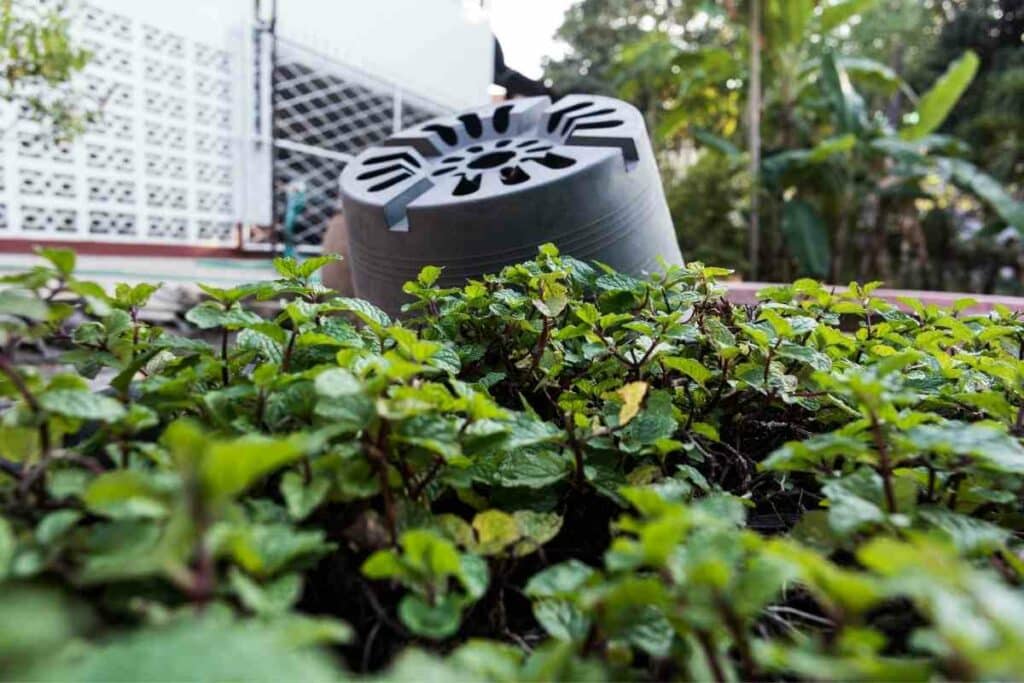
Plastic is also a sturdy material that, unlike pottery or terracotta, is not prone to breaking or shattering.
Plastic recycling helps decrease deforestation when new plastic garden pots are manufactured.
Diverting plastic plant pots from landfills is one of the most effective strategies to reduce pollution in the land and rivers.
Every time you choose a recycled plastic product, you reduce the amount of plastic in a landfill; hence there could be a significant effect if all people do. It will help save landfill space and allow the dumps for other purposes.
Recycling improves the garden container industry’s public image as a responsible environmental steward by recycling sustainable plastic garden pots out of trash and landfills, lowering waste collection costs.
Closed-loop recycling occurs when new things are made from recycled materials and is an incredibly significant aspect of sustainability efforts.
Main Goal: This reduces the dependency on virgin plastics and enables more fantastic recycled post-consumer plastics. Processing these post-consumer plastic pots is less labor demanding and produces fewer carbon emissions.
Final Thoughts
It is possible to reuse plastic garden plant pots. First, disinfect them to eliminate any plant pathogens.
Some nursery and garden centers will accept the broken plastic pots.
Plastic plant pots are also reasonably different – there is a wide range of designs available and a wide range of colors and finishes.
Recycled plastic plant pots are an excellent illustration of this.
Most municipalities provide a recycling collection program for plastic garden pots, trays, and tubs.
If they do, you should be able to recycle non-black plastic plant pots with your regular household recycling bin.
Black plant pots are typically not collected for recycling since the gear used to filter plastics in the recycling process cannot identify them.


